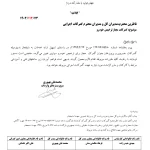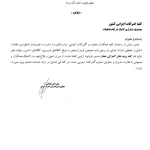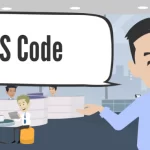Customs clearance is the process through which imported or exported goods pass through customs and obtain the necessary permits to enter or exit the country. This process involves various steps that are crucial for traders and merchants to understand. In this article, we will thoroughly examine the main stages of customs clearance.
Preparation and Review of Required Documents
The first step in customs clearance is the preparation and review of the necessary documents. These documents include:
Commercial Invoice: Contains information such as price, quantity, and specifications of the goods.
Bill of Lading: A transport document issued by the shipping company.
Certificate of Origin: Indicates the country of origin of the goods.
Proforma Invoice: Includes details of the purchase and sale of the goods.
Required Permits: Depending on the type of goods, specific permits from relevant authorities may be necessary.

Submission of Customs Declaration
After preparing the documents, you must submit the customs declaration through the customs system. This declaration includes complete information about the goods, their value, country of origin, and destination. Accurate and correct submission of this information is crucial, as any errors can cause delays in the clearance process.
Payment of Customs Duties and Fees
After submitting the declaration, you must pay the customs duties and fees related to the goods. These costs include:
Customs Duties: A percentage of the goods’ value collected as tax.
Commercial Profit: In some cases, commercial profit is added to the customs duties.
Value-Added Tax (VAT): A percentage of the goods’ value collected as VAT.
Inspection and Control of Goods
After payment of fees, the goods are inspected by customs. This inspection may include a physical examination of the goods, verification against the submitted documents, and ensuring compliance with safety and health regulations. In some cases, goods may be sent to specialized laboratories to ensure their quality and standards.

Issuance of Customs Clearance Permit
After completing the inspection and control stages, customs issues the clearance permit. This permit is the official authorization for the goods to leave customs and enter the domestic market or be exported to another country.
Delivery of Goods
Finally, after receiving the clearance permit, the goods are released from customs and can be shipped to their final destination. This stage may involve coordination with transportation and warehousing companies.
Important Tips for Customs Clearance
Collaboration with Customs Brokers: Utilizing the services of customs brokers can expedite the clearance process.
Ensuring Document Accuracy: Any errors in the documents can cause delays in clearance.
Familiarity with Customs Regulations: Awareness of the customs laws and regulations of the origin and destination countries is essential.
Customs clearance is a complex but essential process for international trade. By following the mentioned steps and tips, you can effectively manage this process and avoid potential delays and issues.








